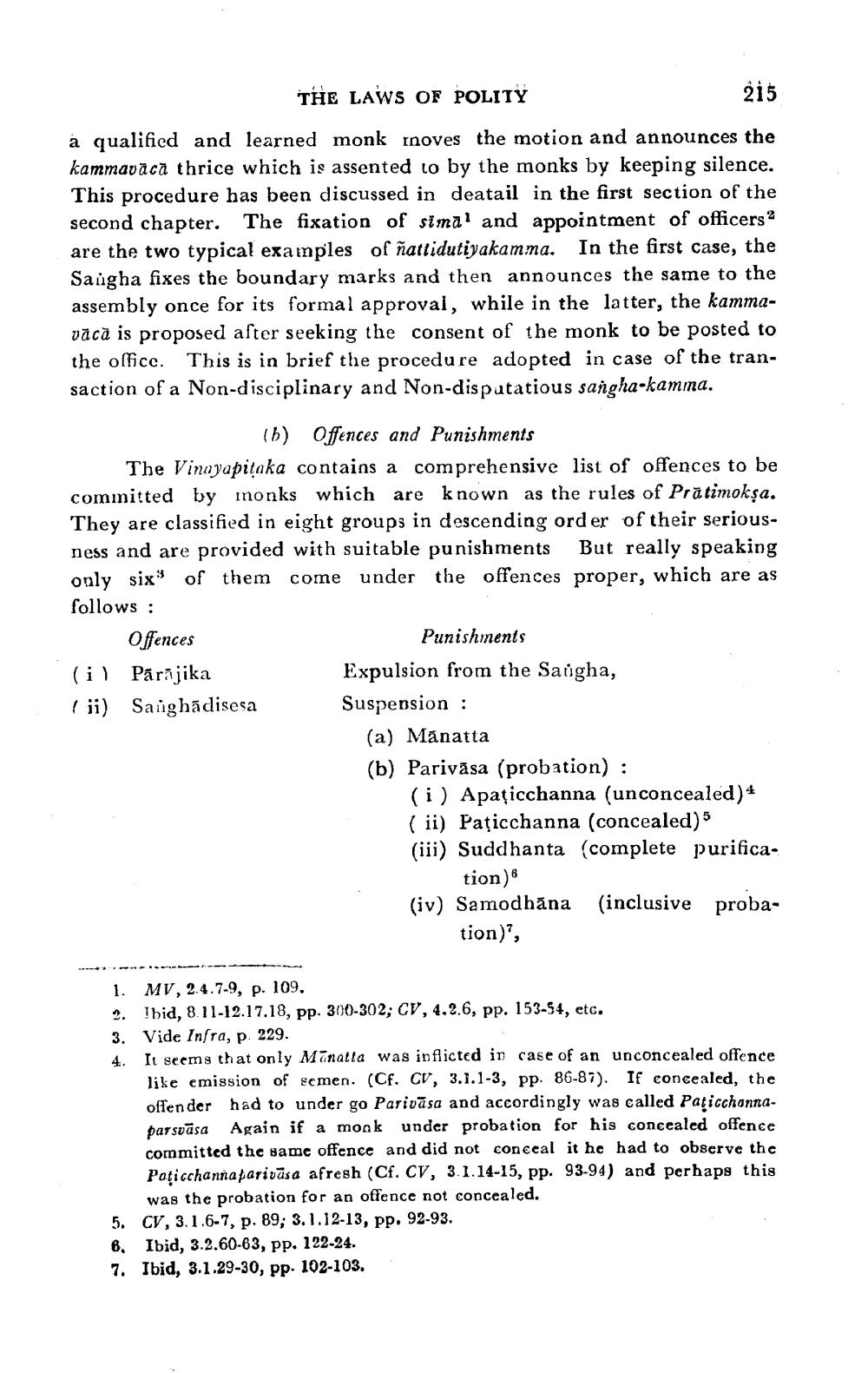________________
215
THE LAWS OF POLITY
à qualified and learned monk moves the motion and announces the kammavaca thrice which is assented to by the monks by keeping silence. This procedure has been discussed in deatail in the first section of the second chapter. The fixation of sima1 and appointment of officers" are the two typical examples of nattidutiyakamma. In the first case, the Sangha fixes the boundary marks and then announces the same to the assembly once for its formal approval, while in the latter, the kammavaca is proposed after seeking the consent of the monk to be posted to the office. This is in brief the procedure adopted in case of the transaction of a Non-disciplinary and Non-disputatious sangha-kamma.
(b) Offences and Punishments
The Vinayapitaka contains a comprehensive list of offences to be committed by monks which are known as the rules of Pratimokṣa. They are classified in eight groups in descending order of their seriousness and are provided with suitable punishments But really speaking only six of them come under the offences proper, which are as follows:
Offences
(i) Pārājika (ii) Sanghadisesa
Punishments
Expulsion from the Sangha, Suspension:
(a) Manatta
(b) Parivasa (probation) :
(i) Apaticchanna (unconcealed)* (ii) Paţicchanna (concealed) 5
(iii) Suddhanta (complete purification)6
(iv) Samodhāna
(inclusive proba
tion)",
1. MV, 2.4.7-9, p. 109.
2. Ibid, 8.11-12.17.18, pp. 300-302; CV, 4.2.6, pp. 153-54, etc.
3. Vide Infra, p. 229.
4.
It seems that only Manatta was inflicted in case of an unconcealed offence like emission of semen. (Cf. CV, 3.1.1-3, pp. 86-87). If concealed, the offender had to under go Parivasa and accordingly was called Paticchannaparsvasa Again if a monk under probation for his concealed offence committed the same offence and did not conceal it he had to observe the Paticchannaparivasa afresh (Cf. CV, 3.1.14-15, pp. 93-94) and perhaps this was the probation for an offence not concealed.
5. CV, 3.1.6-7, p. 89; 3.1.12-13, pp. 92-93.
6. Ibid, 3.2.60-63, pp. 122-24.
7. Ibid, 3.1.29-30, pp. 102-103.




